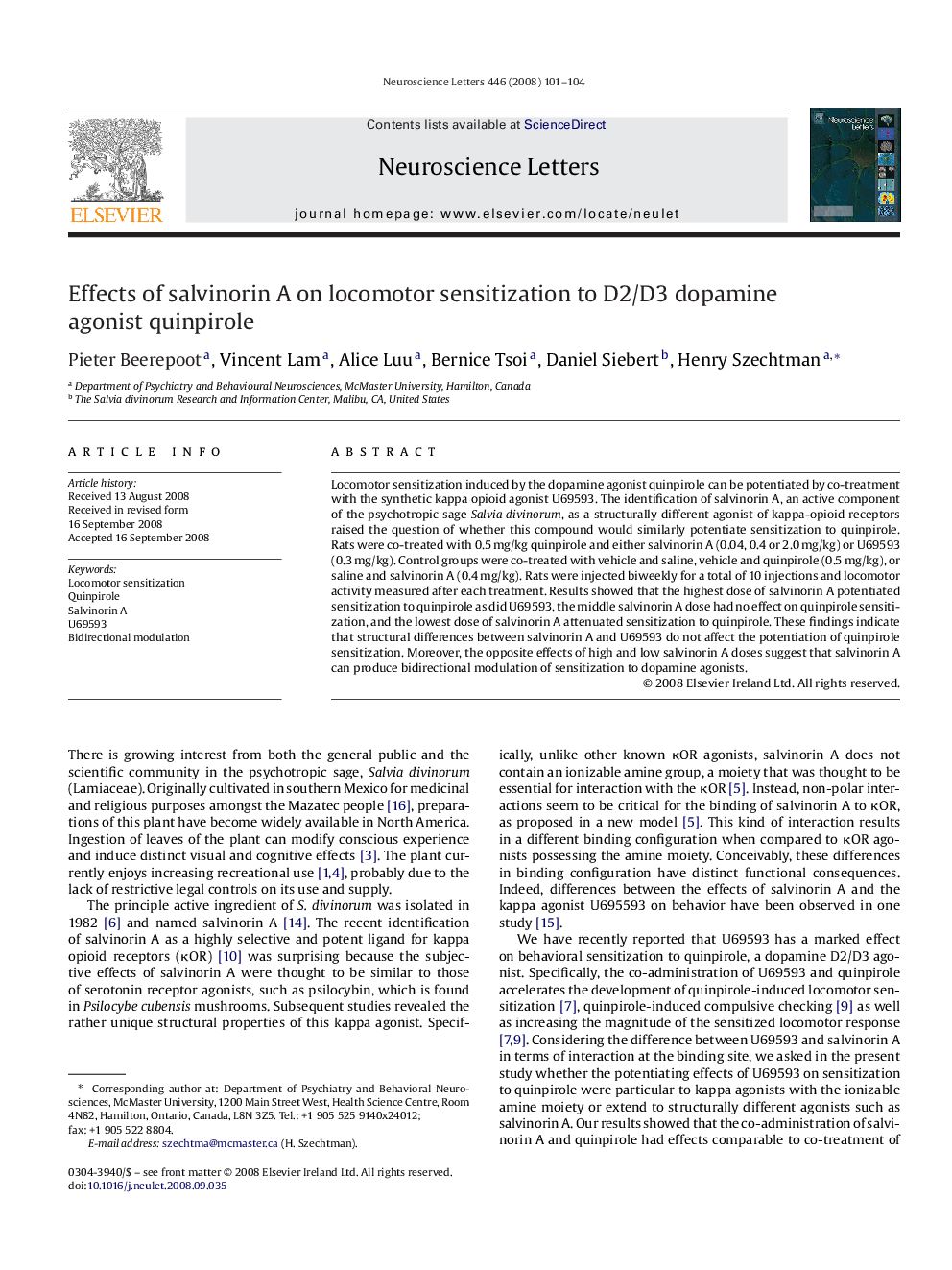| Article ID | Journal | Published Year | Pages | File Type |
|---|---|---|---|---|
| 4347918 | Neuroscience Letters | 2008 | 4 Pages |
Abstract
Locomotor sensitization induced by the dopamine agonist quinpirole can be potentiated by co-treatment with the synthetic kappa opioid agonist U69593. The identification of salvinorin A, an active component of the psychotropic sage Salvia divinorum, as a structurally different agonist of kappa-opioid receptors raised the question of whether this compound would similarly potentiate sensitization to quinpirole. Rats were co-treated with 0.5Â mg/kg quinpirole and either salvinorin A (0.04, 0.4 or 2.0Â mg/kg) or U69593 (0.3Â mg/kg). Control groups were co-treated with vehicle and saline, vehicle and quinpirole (0.5Â mg/kg), or saline and salvinorin A (0.4Â mg/kg). Rats were injected biweekly for a total of 10 injections and locomotor activity measured after each treatment. Results showed that the highest dose of salvinorin A potentiated sensitization to quinpirole as did U69593, the middle salvinorin A dose had no effect on quinpirole sensitization, and the lowest dose of salvinorin A attenuated sensitization to quinpirole. These findings indicate that structural differences between salvinorin A and U69593 do not affect the potentiation of quinpirole sensitization. Moreover, the opposite effects of high and low salvinorin A doses suggest that salvinorin A can produce bidirectional modulation of sensitization to dopamine agonists.
Related Topics
Life Sciences
Neuroscience
Neuroscience (General)
Authors
Pieter Beerepoot, Vincent Lam, Alice Luu, Bernice Tsoi, Daniel Siebert, Henry Szechtman,
